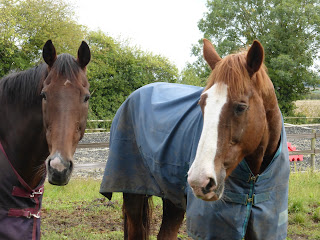Repair of nerves can be very slow and is not always total. Have a look at my nervous system blog to find out more about its importance. Nerves transmit messages to the brain and allow internal organs to function properly, so any damage to nerves can be potentially disastrous.
Nerve tissue is made up of nerve cells (neurons) and glial cells. Although there are different types of nerve cells they all have a body which has dendrites (little branches) and an axon (which looks like a tail). I am planning a future blog about how nerves cells work to send the messages.
Axons are arranged in bundles which make up the nerves. Glial cells are there to support the nerve cells, there are several types including:
·
Microglial cells, these are macrophages and are the primary immune
system for the Central Nervous System
·
Schwann cells, these help maintain axons and form the myelin
sheath in the Peripheral Nervous System
The Peripheral Nervous system can repair (remodel), Schwann cells work with the macrophages to clear away any damaged tissue in an earlier phase of wound healing . They then provide a structure in the shape of a tunnel for axons to regenerate. However, this can only happen if there is no damage to the cell body.
The Central Nervous System is a different story... because the scar which forms during healing in all body tissues can limit the regeneration of nerve tissue here.
When nerve tissue is damaged the cells will cease to pass messages to the brain and from the brain to any area below the damage. If the back is broken and the spinal cord is involved then the loss of use of the back legs can result. Nerve damage in injury is therefore one of the most influential factors for recovery.
Nerve damage and regeneration is not totally understood and so developments in future are possible!
Have you seen this week's video 'A stressful week' on my You Tube channel?
Horse Life and Love. Please check it out and SUBSCRIBE.
You can also follow me on Facebook, Instagram and Twitter for updates on Chesney, Basil, Tommy and Daisy.
Until next time!
Jo




















